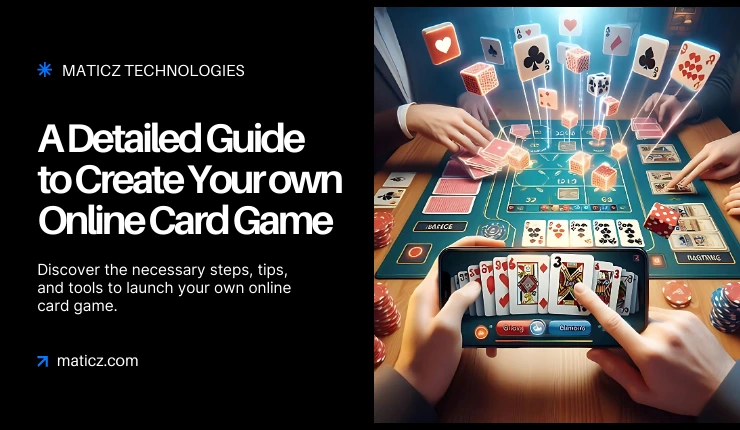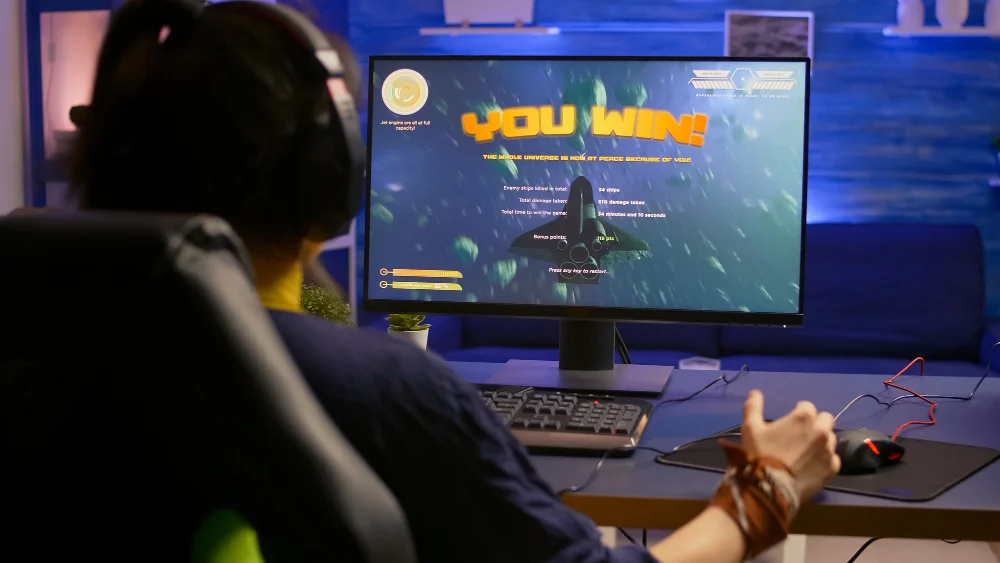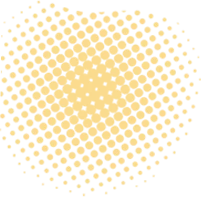Share Posts

How to Create a Card Game: A Detailed Guide for 2025
50
2822
103
Card games have been fascinating players for centuries, but in recent times, they have picked up on an unimaginable scale. They now hold the forefront with the advent of online gaming and the rising demand for unique and customized gaming experiences. Whoever is interested in card games must have some idea of their variety in today's market.
Many independent developers, startups, and big publishers have begun creating such games so there is plenty of competition for a player's attention. There is no doubt that this marks a ravenous market full of opportunities where any new game concept will be attracted towards coming into this platform.
However, if you have ever had an idea of creating your own game but you have never known the direction to go, then the right place has been found. Through this guide, we will break the process of card game creation into simple steps that range from creating a concept down to designing your rules and releasing your game. Whether it is a classic style of card game or something completely new, this blog post will give you the basics to get started.
Card Games – Overview
Cards games are played through a deck of cards by an individual, between two people, or among a team of players. Online card games are similar in gameplay rules to traditional games but are instead played on computer gaming websites or mobile applications. Many of them are based on luck, while others require skill and strategy. Examples include Poker, Rummy, Solitaire, and Blackjack.
There are various kinds of card games, including matching games, trick games, and casino games. All of these enable users to play with other people anywhere in the world. Features like chat options, leaderboards, and cash rewards they include make the gaming experience more engaging. Also, they include different variations of classic card games, giving players more choices and excitement.
As the demand for online card games grows, businesses are investing in this trend in many ways. Some are developing games from scratch, while others are opting for ready-made, customizable card game platforms using which businesses can launch quickly. However, there is no doubt that they position themselves to reap significant benefits in the years to come.
Create Your Own Online Card Game in 8 Steps
Step 1: Define The Concept
Creating a card game that starts with a solid idea is super important. Start by deciding on what your game is about. One key decision is the storyline, as it gives your game its unique vibe and helps it catch people's attention. Think about the storyline that will make your game unique.
Next, consider your target audience. Knowing your audience is important to come up with the design, difficulty level, and features for the game. Are you making the game for casual people who want an easy and simple experience, or for serious gamers who enjoy strategy and challenges?
Finally, decide on the game’s theme and design style. Will it have a modern look or a classic card deck style? Will you include special effects for animations and sound or special effects to enhance the game? Once you have a clear, well-thought-out concept, your next steps will be much easier to develop, ensuring you make a game that players like.
Step 2: Decide On Game Mechanics
When you have selected your game theme, it's time to decide how players will actually play. The mechanics of a game describe the rules and actions of how the gameplay evolves. They determine how to win, what choices players make, and what they do during their turn. A few common mechanics include:
Set Collection - It is a mechanic whereby players try to collect specific groups of cards to earn points or even win the game. This is especially common in Rummy, in which players are trying to get sets of cards of the same rank or sequences of numbers.
Drafting - This mechanic involves players choosing cards from a limited selection, often passing the remaining cards to other players. This requires strategy because the players have to determine which cards to keep and which to allow the opponents to pick. Drafting is highly popular in collectible card games, including Hearthstone or Magic: The Gathering. An online version can be made exciting by including timers, mystery cards, or strategic choices that influence future rounds.
Elimination - When players get knocked out until one remains. For example, in Poker, a player loses if he runs out of chips, while in Uno, the first one to get rid of all his cards wins. Elimination can be made more enjoyable in online card games by adding opportunities for second chances, mini-games for eliminated players, or rewards for surviving longer.
Your mechanics must match the theme for a smooth gaming experience. For example, a game about survival might focus heavily on elimination, while a treasure hunt could involve a set collection to add excitement.
Most card games include different types of cards, such as Character Cards for specific roles, Item Cards for tools or power-ups, and Action Cards that dictate player moves during their turn.
Step 3: Choose The Technical Requirements
First of all, when designing an online card game, one of the most important considerations is choosing the correct technical requirements. The technical requirements chosen here delineate the sets of technologies and tools used in both the game development and deployment of the game. First, an important distinction should be made about which gaming platform to choose: a web-based game, a mobile application, or a desktop application.
Frontend - In general, web-based games use HTML5, CSS, and JavaScript. Native apps for mobile platforms can be developed using Kotlin or Swift. Alternatively, the apps can be cross-platform based where React Native or Flutter can be employed.
Backend - For web games, Node.js is a popular choice. You might also use Python with frameworks like Django or Flask for simpler setups.
For mobile games, the backend often involves using cloud-based services like Firebase for real-time data syncing or AWS for scalable hosting. You might also consider Node.js or Ruby on Rails if you want more custom backend functionality.
Desktop games often use a dedicated server to handle multiplayer features for which technologies like C# with ASP.NET or Node.js can be suitable.
Database - A solid database solution is necessary to store and manage player information, game progress, and other data that persist between game sessions.
> MySQL or PostgreSQL: These are relational databases that work well if you need to store structured data like player profiles, game stats, and leaderboards. They are a good choice for games with complex data.
> MongoDB: If your game’s data is more flexible, a NoSQL database like MongoDB can be a better option. It allows for faster data retrieval and more scalability.
> Firebase: For real-time multiplayer games, Firebase is a great option. It offers a real-time database and cloud storage, making it easier to sync data between players instantly.
By carefully choosing the right technical requirements, you will ensure that your game performs well, is easy to scale, and provides a smooth experience for players.
Step 4: Design Your Cards
Designing a card game means, first and foremost, unleashing creativity in the mind and ensuring that the game is fun. Here, the crucial parts in designing your cards include the front-end user interface, back-face design selection, front-face card layout creation, and organizing an array design for your game cards.
1. Design the User Interface
Everything the user will see, which includes buttons, menus, and so on, occurs in the user interface (UI). The game is intended to be easy enough to navigate with clear choices for starting a new game, checking the rules, and checking scores. Key UI elements you should design include:
Main Menu: Where players can start a new game, access options, or quit.
Game Board: The area where cards are played, with spaces for player hands, the deck, and discard piles.
Player Dashboard: Displays player stats like health points, score, and special abilities.
Buttons and Controls: Simple and easy-to-use buttons for actions like drawing cards, attacking, or passing turns.
Make sure the UI design is intuitive so players can focus on enjoying the game rather than getting lost in complicated controls.
2. Choose Your Back-Face Design
The back of each card should have a consistent and appealing design that fits your theme. For example, use a simple logo, pattern, or artwork that represents the game’s concept. This ensures the cards look professional and cohesive.
3. Design Your Front-Face Card Layout
The front of the card is where the gameplay happens. Design it so that all essential information is easy to read. Include things like card names, illustrations, and instructions or stats. Use clear fonts and colors to make your cards visually appealing.
4. Create an Array Design of Your Game Cards
Now that you have designed the individual cards, you will want to consider how those cards will be presented within the game. An array design is a configuration with which your game will manage and visually present all the cards that exist within your game, such as the player's hands, the deck, and the discard pile.
Deck: A deck's design should be as simple as possible, and usually, the drawing of it depicts a deck of face-down cards. Drawn cards then go from the top of a deck.
Player Hands: Every player will have his own set of cards in hand. Make sure there is enough space in the UI to display the player’s hand clearly and consider making the cards slightly larger or zoomed in when hovered over for better visibility.
Discard Pile: These are the used cards after a player has played them. Discard piles have to be placed apart from the deck and one might also choose to reveal the top card to allow the players an idea of what has been discarded.
Sorting Cards: Consider how the cards will be organized within these areas. For example, you might want to group similar cards or have players sort them by type or number. This will make it easier for players to manage their cards during the game.
Step 5: Code and Implement Game Mechanics
Now that your card game design is ready, the next step is to code and implement its core mechanics. This includes handling how the deck is shuffled, how players draw and play cards, setting up game rules, and adding multiplayer features.
Shuffling the Deck
Shuffling the deck ensures that the game is fair and random. The cards should be mixed so that no player can predict their order. Write a function that randomizes the order of cards before the game starts.
Drawing Cards
When a players pick a card from the deck, it should be removed from the deck and placed in their hand. The game should also deal with cases of running out of cards in the deck, like reshuffling the discard pile. Code a system where players can pick cards from the deck and add them to their hands.
Playing Cards
Create rules for how and when players can play cards. The system should check if the move is valid and update the game state accordingly. If the game involves special card effects, they should be triggered when a card is played.
Add Game Rules and Turn System
The game must follow a set of rules to be fair and fun. You need to code:
Turn-Based System
Most card games are played in turns. The game should track whose turn it is and allow only that player to make a move. Once a turn is completed, control should shift to the next player. A timer can also be added to limit turn duration.
Win and Lose Conditions
Define what happens when a player wins or loses the game. The game should check if a player has met the winning criteria, such as playing all their cards or reaching a certain score. If a losing condition is met, the game should display the results.
Score System
If your game involves scoring, create a function to track and update points. Points can be awarded for playing certain cards, winning rounds, or completing objectives. The game should keep track of scores and update them after every move.
Implement Multiplayer Features
If you are going to make a multiplayer game, you require a server from which players would connect and engage in the games. This requires additional coding to keep everything synchronized between players.
Step 6: Playtest Your Game
After coding an online card game, the task ahead is a playtest of it. That means playing several times to eliminate bugs, observe if the rule is correctly following the logic flow, and so on. It helps identify problems like incorrect scoring, unfair advantages, or technical glitches. Testing each feature carefully ensures a smooth and enjoyable experience for players.
1. Test the Basic Game Functions
Start by testing simple actions like shuffling the deck, drawing cards, and playing them. Make sure each function works as expected without any errors.
2. Check Game Rules and Turn System
Play a few rounds to confirm that the game follows the correct rules. Make sure the turn system is working properly and that players can only make moves during their turn.
3. Look for Bugs and Fix Them
During playtesting, you may find errors like cards not displaying correctly, players getting extra turns, or the score not updating. Note down these issues and fix them in the code.
4. Balance the Gameplay
A good card game should be fair for all players. Test different strategies to see if some moves are too powerful or if certain players have an unfair advantage. Adjust the rules if necessary.
Step 7: Refine the Rules and Mechanics
Now, after testing it out on some playtesting sessions, refine your online card game by perfecting the rules and mechanics to adjust the game with feedback from testers to be fair, balanced, and enjoyable. If players find certain moves too powerful or some rules too confusing, you may need to modify them.
Start by analyzing playtest results. If players struggle to understand the rules, simplify them. If one strategy is too strong, adjust the mechanics to create more balance. You can also fine-tune the scoring system and the turn order.
Once the major issues are fixed, let others play the game and get feedback. They might notice things you missed or suggest ways to improve the game. Based on their feedback, make the necessary changes and test again.
Step 8: Launch Your Card Game
After refining your online card game, write simple instructions that guide players step-by-step on how to play. Include examples and diagrams to explain more complex rules. A well-written rulebook makes your game accessible to new players.
Now it’s time to launch it. Choose the correct medium to publish your game. You might release it on web browsers, mobile app stores, or gaming platforms like Steam.
Promote your game after launching to a wider audience. Share it on social media, gaming forums, and websites. Listen to player feedback and fix any remaining bugs or issues. Regular updates and new features will keep players engaged and help your game grow over time.
Conclusion
Making a card game can be both fun and fulfilling. From coming up with a simple yet unique idea, designing the rules, and putting it to the test in front of players, you would have your ideal game. To make a traditional or new card game, careful planning, and creativity are needed to help create an entertaining game.
If you have a great idea, you want to put it into reality, and have the effort to do so, then you can design your game. So, start creating, take your idea, and enjoy the entire process of making your very own card game with Maticz, a popular game development company known for diverse card games.
With our personalized solutions, we can help integrate advanced features in your game - multiplayer modes, AI-powered opponents, integration with blockchain technology, and also seamless cross-platform support. With our team's focus on delivering a great gaming experience combined with engaging gameplay, smooth animations, and an interactive user interface, reach us today.
Tap Into the Future
The latest insights, posts, and project updates - straight to your inbox.



